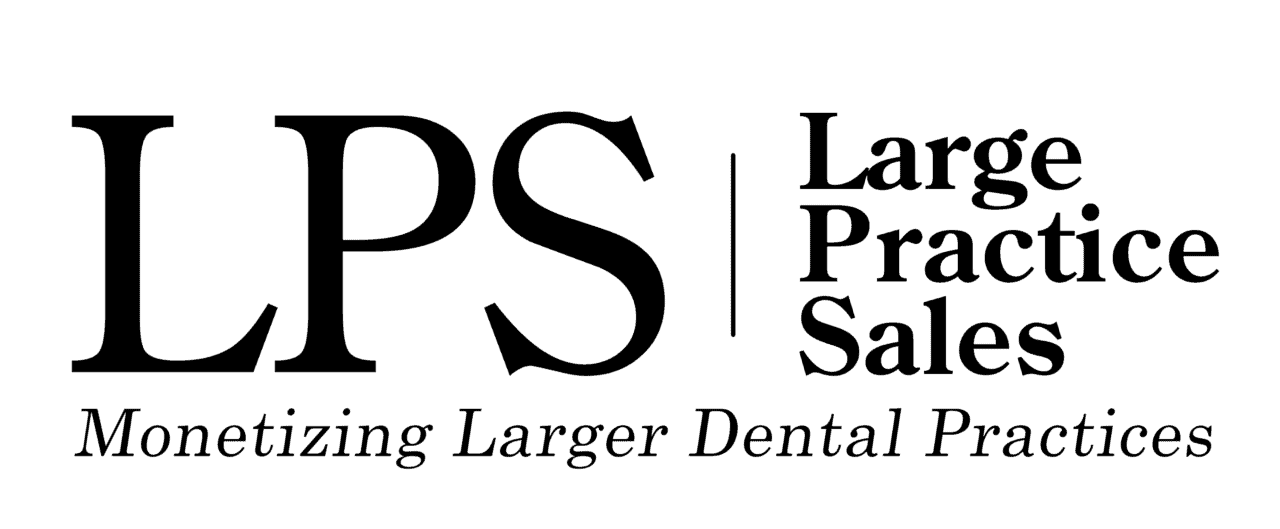
This article first appeared in the September 2024 issue of Dental Economics Magazine
Contrary to popular belief, practice values in IDSO (invisible dental support organization) partnerships continued to achieve new records in the first half of 2024 for larger, growing Large Practice Sales (LPS) clients nationally. Fortunately, new investors in IDSOs are not just private equity.
Investors including sovereign wealth funds, family offices, and asset managers including BlackRock, provided IDSOs with over $5 billion of new capital and credit lines in the first six months of 2024. These new investments offset the decline of the IDSOs that have been impacted by a decline in performance, particularly in orthodontic practices, and higher interest rates.
The average age of IDSO partner doctors is changing. Notably, over $150 million of LPS-advised IDSO partnerships in the last 24 months have been for doctors in their 30s, a significant shift post pandemic. To achieve maximum practice value, doctors 55 and older need to plan now, not when they are over 60.
Younger doctors are now grasping that selling 51% to 80% of their practice for cash today at low tax rates enables them to diversify their investment portfolios. They continue to lead their practice as owners for years or decades with full autonomy. Doctors also gain significant upside in their retained equity due to their long chairside horizon enabling their ownership value to multiply over time. Most importantly, IDSO silent partners reduce the administrative burdens of practice operation to give doctors more time with young families.
What specialties can benefit from joining an IDSO?
Today’s record values for GP and all specialties are available to growing practices run by personable doctors with a specific growth plan. Growing areas help values, but two of our record practice values recently were for GP practices in New York and Michigan. A Tennessee GP achieved 11x EBITDA, and multiple LPS clients in a variety of blue states also exceeded 10x values or greater. LPS transaction values ranged from $3.5 million to over $50 million. The quality of the doctor trumps geography every time.
Orthodontic practice values have remained high due to the growth of the now 10-plus dental trifecta IDSOs eager for pediatric specialists, orthodontists, and OMS practices in the same areas. They create captive patient referral patterns and valuable organic growth as other practices in the region join the same IDSO family.
OMS practices continue to be the fastest consolidating of all practice types due to associate recruiting challenges. Over 40% of the 250 2024 graduates from residency joined IDSOs or DSOs, making recruiting very difficult for the more than 5,000 independent OMS practices. It is tough to compete with six-figure signing bonuses, $750,000 first-year income guarantees, and equity grants.
Periodontic and endodontic practices today also have more choices than ever in IDSO partnerships. While there are now multiple single specialty IDSOs focusing on both of these, they are currently outbid in an LPS process. The multi-specialty groups eager for periodontists and endodontists include GP-focused IDSOs eager to add specialists within their GP practice footprints, enabling partner practices to refer within the IDSO family. In addition, there are now IDSOs that are OMS and perio only and dental surgical trifecta IDSOs eager for OMS, perio, and endo in the same regions. Like other specialties, they may now have 10 or more eager IDSO bidders.
Independent research indicates that over 20% of US dentists now consider themselves as a part of over 1,000 traditional DSOs or IDSOs. LPS believes that fewer than 100 of the IDSOs are qualified bidders for LPS clients. The balance is on the blacklist for a variety of reasons.
IDSOs on the blacklist may have limited capital for growth, obfuscated partnership structures, failing management, questionable investor quality, and poor historical choices of doctor partners. The list changes monthly, but it is unfortunately growing. New IDSOs with proven investors and experienced management have thankfully filled the void.
Doctors should choose their IDSO partner carefully. Many will succeed and deliver on their promised support and gains on the doctor’s retained ownership, but others will not.
Benefits of joining an IDSO
IDSO partner practices have 25% lower supplies costs and better team benefits, but size can also be leveraged in other areas. Many IDSO partner practices are reimbursed by insurers at higher rates than independent dentists. IDSOs are also on the cutting edge of supporting their partner practices with new technologies providing advanced patient care. AI has been implemented in thousands of IDSO partner practices in the first half of 2024.
Even as the growth of IDSOs accelerates, most doctors’ number one concern is still understanding their level of autonomy in a partnership. The good IDSOs give their doctor partners full autonomy, not just clinical autonomy.
Doctors continue to manage their team members as before the partnership and are not forced to use certain suppliers, labs, or software. They are also not required to take certain payers or perform any special procedures. Doctors are still owners; they make the decisions. Doctors are urged to continue leading their practice as they have historically with the same elements that made them attractive to an IDSO partner at an exceptional value.
As the Federal Trade Commission and Justice Department continue their formal inquiry into the impact of US health-care consolidation, launched in May 2024, it is time for every larger practice to understand the potential value of their practice in an IDSO partnership. Practice values later in 2025 could be different.
- Practice Values, Liquidity and Risks - October 23, 2025
- Attributes of the Most Valuable Dental Practices & Dental Groups in 2025 - June 24, 2025
- The Fears and Concerns About IDSO Partnership - June 11, 2025
